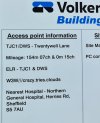DelayRepay
Established Member
- Joined
- 21 May 2011
- Messages
- 2,929
I buy pasta by the kg. I buy meat by the kg. I buy carrot by the kg. I buy rice by the kg. I buy juice by the L. I can't remember all the different fractions between the imperial units and can only memorise 1 lb = 454 g (1/2 lb = 227 g; 1/4 lb = 113 g) and 1 pint = 568 mL. I will need to use a calculator if different units are used.
I buy pasta and rice by the packet and juice by the carton. A bag of pasta is normally 500g, but if it was 1lb I would still buy the one bag. I guess if I was really bothered I could find one of those refill shops that sells it loose so I could buy 1.1lb.
The thing is though, this does provide more opportunities for 'Shrinkflation'. Your 500g pack of pasta becomes 1lb but the price stays the same. And it will make it more difficult to compare prices if some shops display prices in metric and some in imperial. I don't object to retailers using whatever pack size they prefer, but I do hope we retain the approach of quoting price per 100g or whatever on the price tag.
Shrinkflation - examples?
"Shrinkflation" is the business practice where pack sizes of items (often food items) shrink in size or quantity, yet the selling price remains the same, or even increases! An example: Packs of McVities (Jaffa Cakes) Cake Bars came, until recently, in packs of eight and were being sold for £1...
www.railforums.co.uk
I worked for Safeway when they switched from lbs/Oz at the deli counter. We were all given credit-card sized conversion guides which were handed out to customers. If I was asked for a quarter of smoked ham, or a pound of cheddar at the deli counter, I was capable of dispensing the metric equivalent. Even then, you were judging quantities by eye, so it was always going to be just under or just over the specified quantity.
My dear dad would never use the deli counter because he was convinced that they deliberately provided 'just over' in order to increase their takings. But how many people actually want exactly a quarter of ham, as opposed to (say) five slices of ham? I guess if you're making a pie or something then you might need a particular weight, but most of my ham goes in sandwiches!
My dad was a bus conductor at the time of decimalisation and he always said it was an excuse to increase fares as they were all rounded up. He said he had endless complaints from passengers who thought they were being over-charged. This was his biggest objection to being in the EU - he worried that one day we might join the Euro and Stagecoach would use the opportunity to raise the price of his Megarider.
Last edited:

